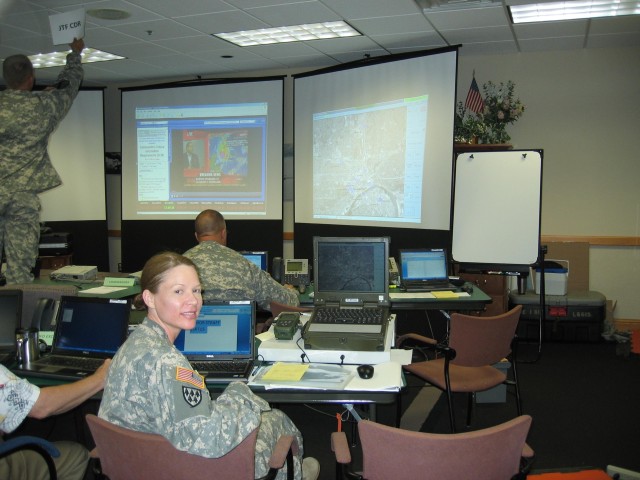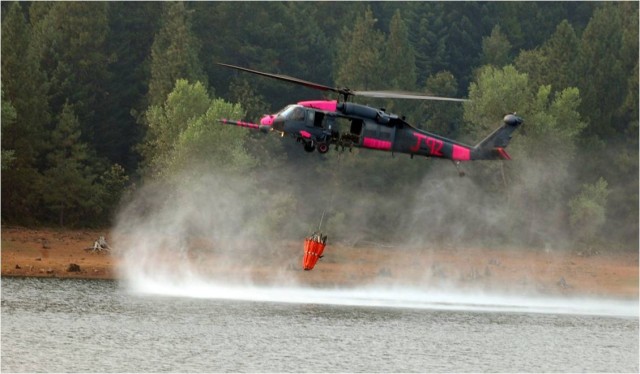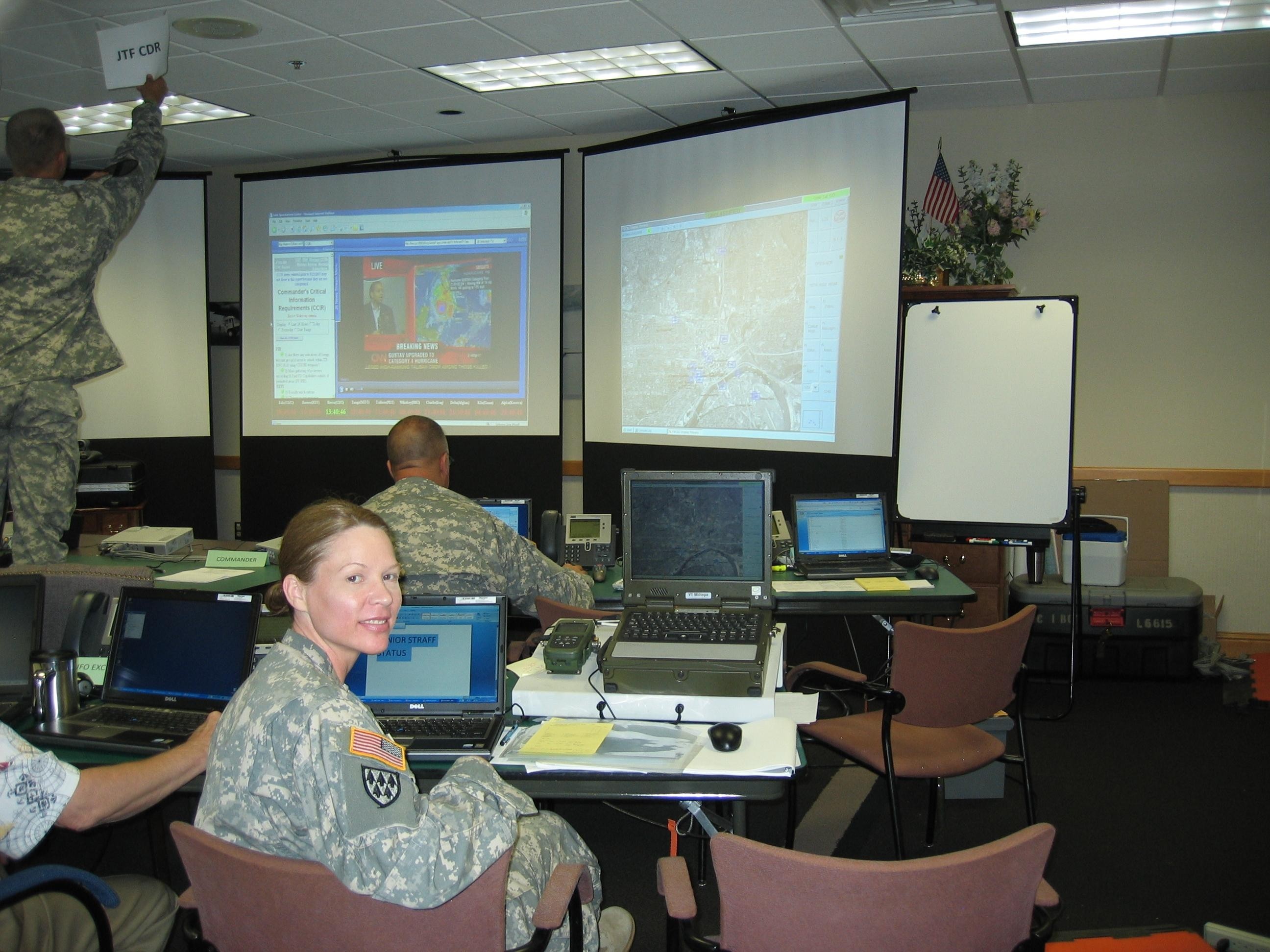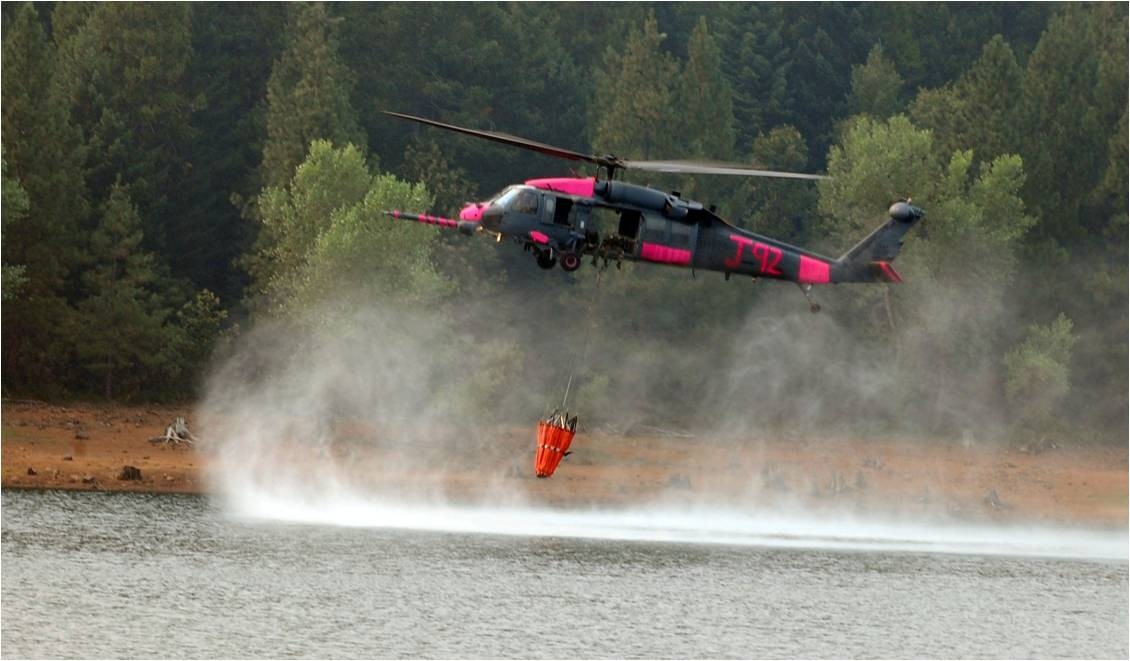A satellite-based system for tracking friendly forces in war has now been used in domestic missions.
Blue Force Tracking-Aviation served since July to support National Guard units battling wildfires in California and Nevada and to support units providing security at the Democratic national convention in August in Denver and at the Republican national convention in September in St. Paul, Minn.
"This was the first time we've had situational awareness in a domestic operations realm where we were able to track and message key ground and air assets," said Al Abejon, director of Blue Force Tracking-Aviation for the Army. "This is leveraging combat capabilities for use in homeland security operations."
National Guard members who experienced the system in Iraq or Afghanistan expressed their appreciation at its domestic deployment. "Many of them had already used it in combat," said Darryl Thompson, a field service representative/technician. "It was welcomed by the Soldiers at all levels."
Managed in Huntsville, the Blue Force Tracking-Aviation is used to track aircraft and vehicles equipped with the system.
"It's a satellite-based tracking system that provides situational awareness for a platform operator and the command structure, as well as a two-way beyond line of sight messaging capability," Abejon said.
At the Democratic national convention, it supported 58 vehicles and 26 aircraft of various types. It supported 38 vehicles, eight aircraft and nine base stations at the Republican national convention.
Twenty vehicles were equipped for the wildfires operation in California and Nevada; and equipped aircraft from other states assisted. The National Guard credited the system for saving two lives in July in California, according to Abejon. In this incident, field representatives had set up one of their mobile kits as a base station. They were able to stop two Soldiers who were about to drive into a fire.
Blue Force Tracking-Aviation is under the Project Management Office for Force 21 Battle Command Brigade and Below. That project office belongs to the Program Executive Office for Command, Control & Communications Tactical, based at Fort Monmouth, N.J.
"We had been working with the National Guard J3s (operations officers) of various states," Abejon said. "They'd been deploying this combat capability to enhance the performance of their states' domestic operations missions. So they asked for our assistance with California wildfires as well as support for their assigned security missions for the Democratic national convention and the Republican national convention."
The Huntsville office dispatched field service representatives to accompany the system at those venues. Thompson and Francis Benson, both of QinetiQ North America, went to California. Samuel Scott, training coordinator Dan Norris, Thompson, Dave Kirkland, Chris Breitbach, Sara Glahn, Alan Hautea and James Williams went to the Democratic national convention. Breitbach, Benson, Ted Sendak, Thompson, Norris, James Hicks and Chuck Salmons went to the Republican national convention.
"They set the systems up, they conducted training and then they maintained the systems during the duration of the support, and then recovery," Abejon said.
They trained more than 120 National Guardsmen at the two conventions. And they trained civilian firefighters in California.
"I was just glad to help out where I could help out at the DNC (Democratic national convention)," Scott said. "To help out with the convention and to support the troops was great."
"I think not having any major incidents at either convention speaks to the system's enhancement of security," Norris said. "I think it's nice to see military assets used in a peacetime environment and have a purpose."
The system has been used throughout the world the past six years. In late 2002 fielding began to deploying units in Kuwait, Germany and the continental U.S. It's also used on several coalition aircraft.
"Right now we have over 3,800 systems that have been fielded on aircraft around the world," Abejon said.
Its original intent was to provide improved situational awareness, air and ground, as well as a reliable beyond line of sight messaging capability for command and control.
"We have a new network architecture that is being developed," Abejon said, "and will be fielded in the next two to three years that will allow us to track aircraft and vehicles every two to five seconds and enable a limited beyond line of sight voice over Internet protocol communications. So, instead of messaging we can actually talk."




Social Sharing